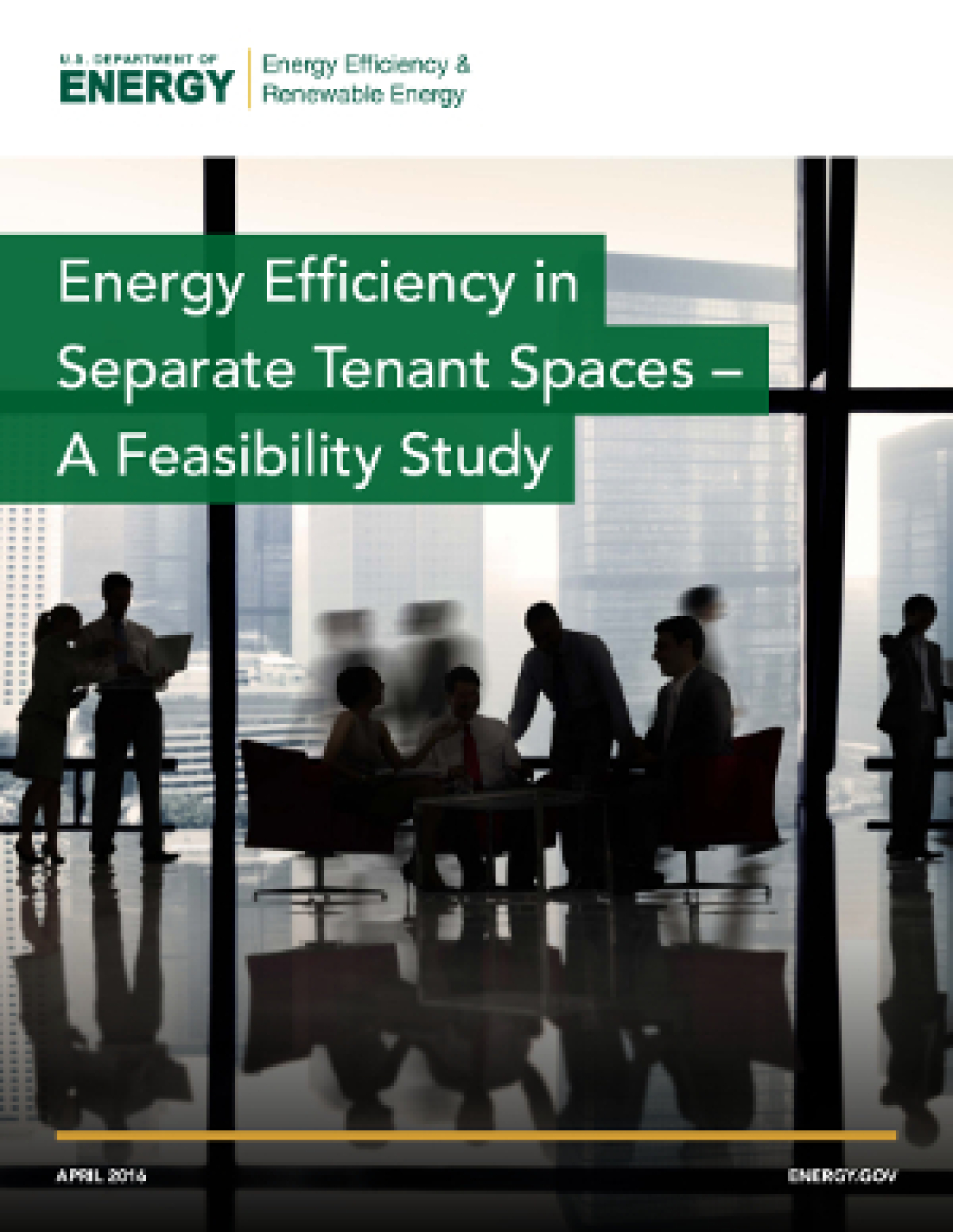DOE published its Energy Efficiency in Commercial Tenant Spaces feasibility study highlighting opportunities and barriers to energy efficiency.
May 3, 2016WASHINGTON, D.C. – The U.S. Department of Energy (DOE) published its Energy Efficiency in Commercial Tenant Spaces feasibility study that highlights both opportunities and barriers to implementing energy efficient technologies in multi-tenant commercial spaces. The study finds that American businesses can occupy more energy-efficient spaces that help improve their bottom line, attract and retain the best workers, and increase their competitiveness. As required by the Energy Efficiency Improvement Act of 2015, the study provides a market analysis and showcases best practices, resources, and policies that address the persistent challenges to incorporating energy efficiency in shared space types. Roughly half of commercial real estate is occupied by tenants, and greater efficiency in this sector could save billions of dollars for American businesses.

The study finds that tenant space can be built to save 10-40% energy compared to a typical space, with a financial return on investment of well over 100%. More energy-efficient buildings are also more valuable for owners. A variety of studies have shown that ENERGY STAR® buildings command a 6-10% sales price premium of nonrated buildings, attract higher quality tenants, and command a 2-6% rent premium.
In its discussion of the tenant space market, the study found significant potential to improve energy efficiency during the design and construction of tenant spaces and describes several possible steps to encourage owners and tenants to improve the efficiency of those spaces. The study also examined persistent barriers in the market, such as the near ubiquitous lack of energy data. It was determined that a significant increase in submetering of tenant spaces would help overcome this barrier and encourage more widespread uptake of tenant space energy efficiency measures. In addition to the value of tenant space submetering, the study also identified opportunities to accelerate energy efficiency in this sector through the development of tools and resources to compare packages of energy efficient technologies, the expansion of the business case of energy efficiency, creation of low-cost energy simulation models for tenant spaces, improvement of leasing language and broker engagement, and ultimately, the creation of a federal tenant space recognition system.
Further, the study identified the need for greater cooperation among owners and tenants. While many previous intervention efforts have provided resources and guidance geared toward building owners, it has been shown that more collaboration among owners and tenants would facilitate deeper and more lasting energy reductions. Specifically, this study takes into account both owners and tenants in addressing the multiple challenges to implementing energy efficiency measures within tenant spaces including: the hurdles the leasing process entails, unawareness of potential financial benefits and opportunities afforded through energy efficiency, tenant disparity, the “split-incentive” issue between owners and tenants, and the inability to collect tenant-specific data.
This study has provided a roadmap for commercial owners and tenants to navigate the barriers to the incorporation of energy-efficient technologies and strategies within shared spaces, as well as opportunities that can be leveraged to achieve substantial energy savings, which could result in billions saved by American businesses and an unmatched competitive edge.

